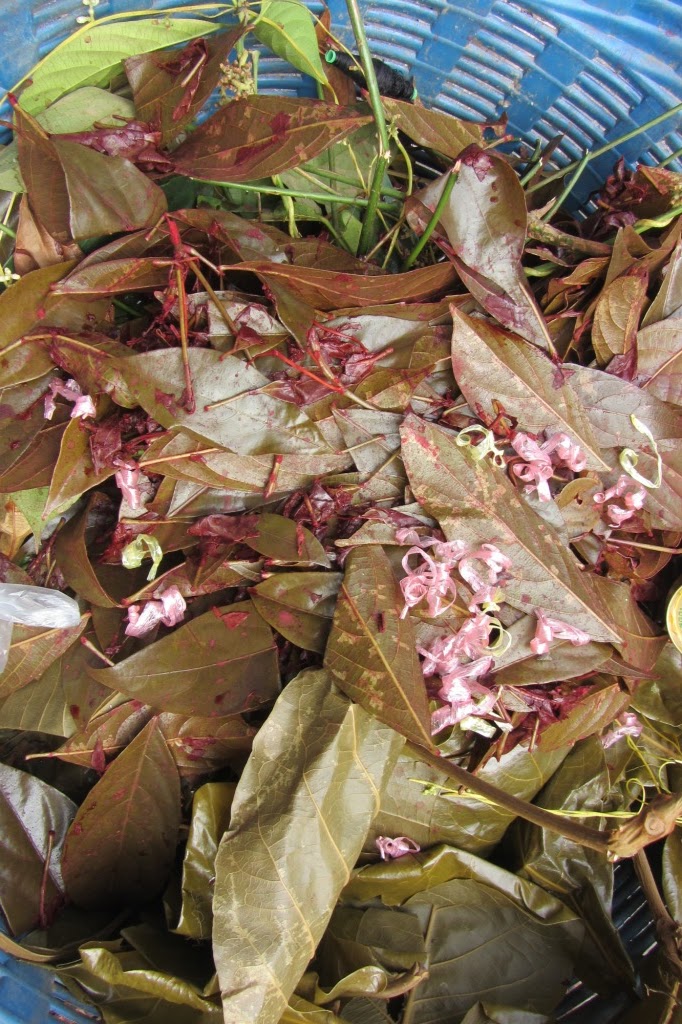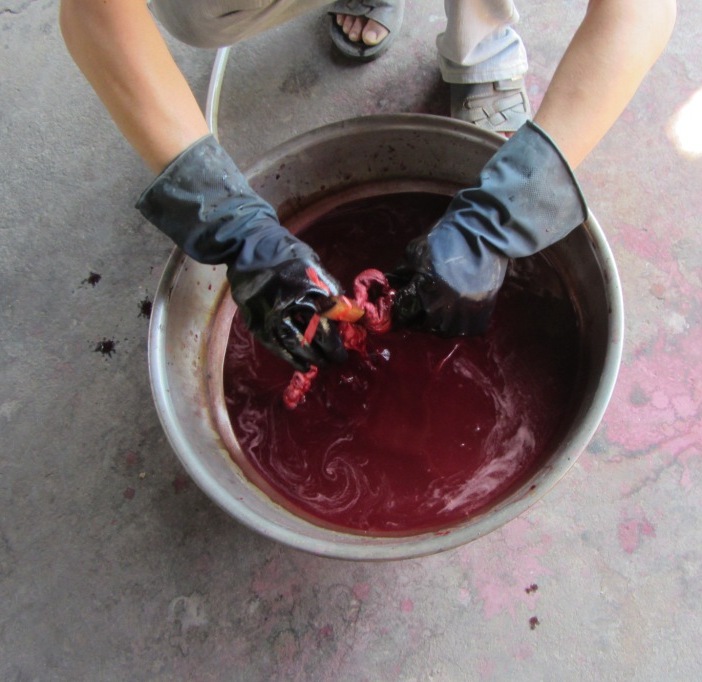Textile workshops hide in gardens and courtyards
.JPG)
This is a fine silk house where concentration and skill reign to perpetuate the traditional textiles of the country.
 Silk cocoons can either be white or yellow.
Silk cocoons can either be white or yellow.
 |
Ebony for grey, betel for brown, anatto seed for orange,
jackfruit wood for yellow, lac stick for red (right)... |
 |
Raw silk
|

Every picture tells a story, as the content of the rubbish bin, full of used plant material after concoction. Red berries, probably anatto seeds, are set out to dry in the sun. This vat of reddish colour has steaming away for a while ... seeing the pile of burnt charcoal behind it!
Ikat thread preparation

 One of the techniques to obtain patterns is to pre dye the motifs on the threads before weaving, so the patterns appear from the weft, or in the case of double ikat from the blend of patterns pre-established on the warp and the weft threads. Ties with plastic string is used to create reserves. Several colours can be applied while adding or removing further ties. This technique requires precision, and also involves a long process...
One of the techniques to obtain patterns is to pre dye the motifs on the threads before weaving, so the patterns appear from the weft, or in the case of double ikat from the blend of patterns pre-established on the warp and the weft threads. Ties with plastic string is used to create reserves. Several colours can be applied while adding or removing further ties. This technique requires precision, and also involves a long process...
 |
| Removing the tie strings after the dyeing process. |
It also takes a skilled weaver to ensure intricate designs form properly. See this eel and flower pattern on a Phuan ethnic skirt.
 |
Eel and flower pattern on a silk
Phuan skirt Laos |
The blurred edges of the designs had charm to ikat pieces. You can see some fine examples in the Pheang Mai Gallery display room.
Plenty of talented weavers at Pheang Mai
In the workshop, weavers are entirely concentrated on their work. They are masters of dexterity.

Handweaving par excellence - counting warp threads to reproduce patterns on a fine silk piece. (above). Every thread counts!
Reading culture through their traditional clothes
Master weaver and pattern designer for Phaeng Mai Gallery, Viengkham Nanthavongdouangsy
has written this informative book on the sinh, the traditional Laotian skirt. You will find a lot of information on different weaving patterns and their signification according to areas and ethnic groups.
 |
| A wealth of insights in this bilingual book |
It is well worth visiting the exhibition of fine antique pieces above the shop. It's encouraging to see Laotians have kept collections of their textiles.
Threaded warps with weaving patterns are kept for further use. What a library of Laotian textile heritage.




.JPG)





.JPG)




















































